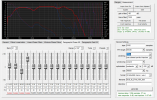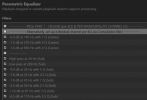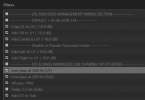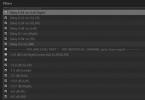THREE METHODS FOR SUBWOOFER TIME ALIGNMENT
As I mentioned in the previous post, Dr. Uli has a different subwoofer time alignment procedure than what I use. I am familiar with two of them, but I have never seen the third. What's more, he cross-references the time alignment with each other and he spends 3x as much time on this procedure than I do.
These are the three methods:
1. Time alignment by impulse response. Delay the tweeter by 1000 samples, then align the tweeters. Look for the position of the subwoofers then adjust. This is well described in
@mitchco's
book, I highly recommend it (no, I don't earn a commission from Amazon links

)
2. Time alignment by sinewave convolution. Described
here. The advantage of this method is that it compares the subwoofer with the woofer, and you are able to see the initial impulse as well as the steady state impulse.
3. Time alignment by subwoofer-woofer alignment. This is the method I haven't seen, and I will describe.
TIME ALIGNMENT BY SUBWOOFER-WOOFER ALIGNMENT
1. First we obtain a "ballpark" figure for what we expect the delay to be. Measure the distance from woofer to MLP, and the sub to MLP. In my case, the difference between the two was 1.3m. To convert distance to time (assuming speed of sound is 343m/s), it is (1.3/343) = 0.0379s, or 3.79ms. To convert 0.0379s into samples, it is (48000 * 0.013), or 182 samples.
2. The first step is to time align the woofer to the tweeter using the standard method described by
@mitchco (also described below). The next step is to time align the sub to the woofer.
3. Create this filter.
- For the sub: use the standard crossover that you are planning to use.
- For the woofer: Save XO1L48/R48 as XO2L48/R48, i.e. your woofer will be receiving exactly the same signal as your sub.
- For mids and tweeters: leave them alone.
- Generate a multiway filter from the above.
4. We will be measuring twice, once with the woofers+mids turned off, and again with the sub+mids turned off. This will give us two curves, sub+tweeter and woofer+tweeter when we finish taking the sweeps. Take two sweeps, and the result will look like the curve above. Overlay the curves and work on one channel at a time.
5. Switch to the Step response. You will see the above curve.
6. Read the timing of the woofer peak and subwoofer peak, then rotate the subwoofer curve by the exact number of samples. In this case, the woofer was at 6045, and the sub was at 6369, the difference is 324 samples. This corresponds to (324/48000 * 1000) = 6.75ms. But wait, the calculation above says that the delay should be 182 samples or 3.79ms. This is because there are other types of delay at play here, which is why we don't time align by geometry alone.
7. This method only time aligns the initial impulse. So now we need to time align the steady state. Take note of the 324 sample delay, and use the sinewave convolution method to cross-reference it.





